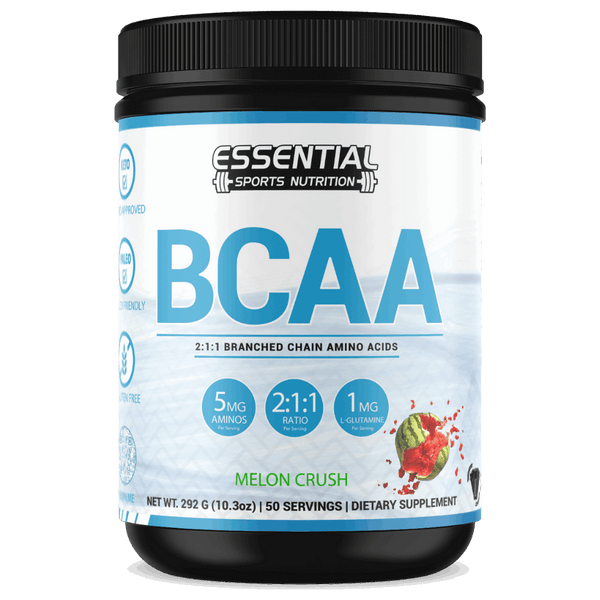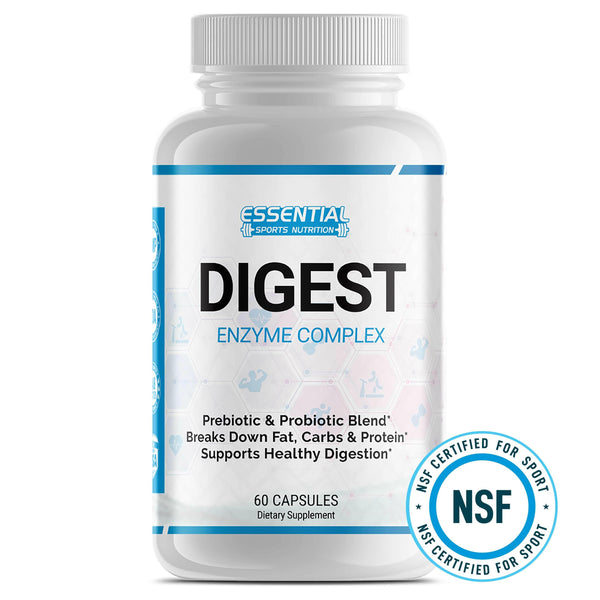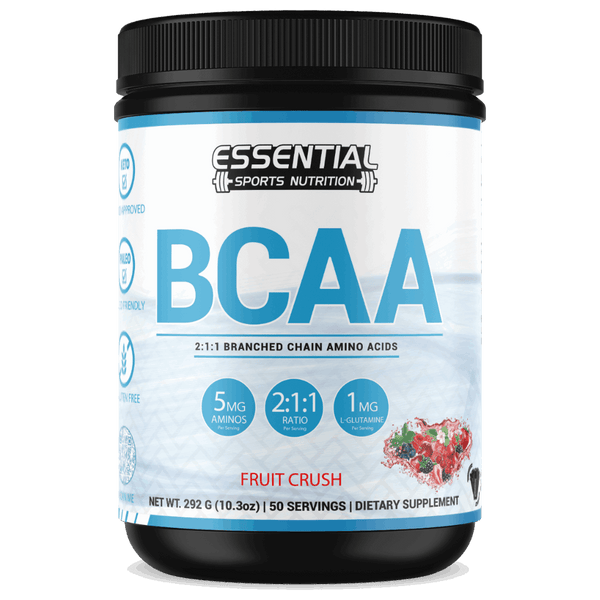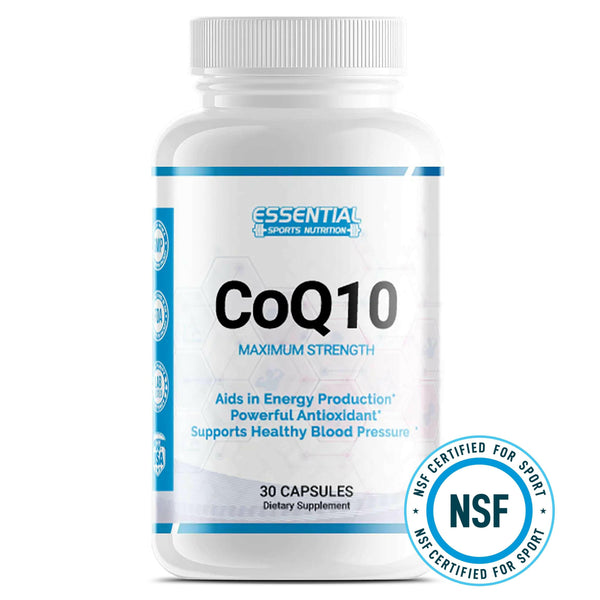Real Men, Real Legs: The Ultimate Guide to Hamstring Exercises for Men
To strengthen your hamstrings effectively, focus on exercises that promote muscle growth while preventing injuries. Start with basics like deadlifts and lunges, which engage your hamstrings and enhance stability. Progress to leg curls to specifically target your hamstring muscles, ensuring you maintain proper form to avoid strains. Incorporate Romanian deadlifts and glute-ham raises for advanced training, emphasizing both strength and balance in your lower body. Consistently apply these exercises focusing on slow, controlled movements and appropriate resistance to fortify your hamstrings and improve overall mobility. Stick around for more insights into optimizing your hamstring workouts.

Key Takeaways
Deadlifts target the hamstrings, glutes, and lower back, enhancing overall strength and stability.
Lunges actively engage hamstrings and improve leg and core stability.
Leg curls focus specifically on isolating and strengthening hamstring muscles.
Romanian Deadlifts emphasize hamstring and hip strength without overloading the spine.
Glute-Ham Raises effectively build both hamstring and glute muscles, boosting posterior chain development.
Understanding Hamstring Anatomy
To effectively enhance mobility and prevent injuries, it's vital to understand that your hamstring muscles, including the biceps femoris, semitendinosus, and semimembranosus, play pivotal roles in knee flexion, hip extension, and lower leg rotation. The biceps femoris, which is unique in its structure, comprises two distinct parts: the long head and the short head. Both heads are important but serve slightly different functions in your daily movements and athletic activities.
The long head of the biceps femoris originates from your ischial tuberosity, commonly known as your 'sitting bone,' and is primarily active during activities involving hip extension and knee flexion. This part is especially crucial as it bears a significant load during high-intensity exercises such as sprinting or heavy lifting. On the other hand, the short head, originating from the femur, primarily assists in knee flexion. This differentiation is key to targeting these muscles accurately during your workouts to optimize performance and minimize the risk of injury.
Understanding the specific roles and demands placed on these muscle parts allows you to tailor your training regimen more effectively. This tailored approach enhances muscle function and significantly contributes to your overall injury prevention strategy, ensuring a safer and more effective engagement in physical activities.
Essential Hamstring Stretches

Incorporating essential hamstring stretches into your exercise regimen can significantly enhance flexibility, reduce injury risk, and support muscle recovery. These stretches are crucial for improving your range of motion during athletic activities and everyday mobility and posture maintenance.
Regularly performing hamstring stretches will alleviate tightness in the back of your thighs, which often contributes to discomfort and limits your mobility. This practice is particularly important if you engage in activities with significant demands on your legs. Enhanced hamstring flexibility can also reduce the strain on your lower back, promoting better overall spinal alignment and decreasing the likelihood of pain and injury in that area.
Aim for consistency and proper technique to reap maximum benefits when focusing on hamstring stretches. Gentle, sustained stretching, where you hold each stretch for 20-30 seconds, can effectively increase muscle elasticity and blood flow to the area. This method not only helps prevent injuries but also aids in muscle recovery post-exercise.
Beginner Hamstring Exercises
Starting your hamstring training with basic stretching techniques is essential for building the flexibility and strength that will support your fitness journey. You'll want to incorporate simple resistance training using light weights or resistance bands, which can effectively enhance muscle endurance without risking injury. These foundational exercises are key in preventing hamstring strains and critical in rehabilitating any existing injuries.
Basic Stretching Techniques
Basic hamstring stretches, such as the lying hamstring stretch, can greatly enhance your flexibility and reduce the risk of injuries. When you're just starting out, it's essential to focus on the basics of hamstring stretching to build a solid foundation. These beginner exercises are designed to target the muscles at the back of your thigh, which is important for improving your range of motion and overall athletic performance. You'll gradually increase your muscle flexibility by incorporating a simple routine, like the lying hamstring stretch. Remember, consistency is key. Regular practice of these stretches will prep your muscles for more advanced training and safeguard them against potential strains or injuries. Keep your approach measured and patient to see the best results.
Simple Resistance Training
To strengthen your hamstring muscles effectively, begin with simple resistance training exercises that utilize basic equipment like dumbbells or resistance bands. Focusing on beginner hamstring exercises ensures you're building a solid foundation while minimizing the risk of injury. Remember, consistency and maintaining proper form are essential to your progress.
| Exercise | Equipment | Key Benefit |
|---|---|---|
| Dumbbell Deadlifts | Dumbbells | Strengthens entire hamstring |
| Resistance Band Pulls | Resistance Band | Enhances muscle flexibility |
| Glute Bridges | Body weight | Targets lower back and hamstrings |
| Lying Leg Curls | Dumbbells | Focuses on hamstring isolation |
Incorporating these foundational movements into your routine will help you safely and effectively enhance your hamstring strength and overall leg health.
Advanced Hamstring Workouts

When you're ready to step up your game, advanced hamstring workouts can significantly enhance muscle strength, size, and power. Nordic curls and glute-ham raises are cornerstone exercises in these routines, targeting the hamstrings intensely to foster significant development. These advanced hamstring workouts aim to build muscle and focus on injury prevention and rehabilitation, ensuring you're strengthening safely and effectively.
Nordic curls, for example, are highly beneficial as they emphasize eccentric muscle contraction, which is vital for muscle hypertrophy and improving muscle control. This exercise reduces the risk of hamstring strains by increasing the muscle's ability to absorb force during high-speed activities. Similarly, glute-ham raises provide a thorough workout that targets the hamstrings and engages your glutes and lower back, promoting balanced muscle development and reducing the risk of injury.
Incorporating these exercises into your routine challenges your hamstrings in new and demanding ways, which is essential for breaking through plateaus and achieving peak growth. It's important to ensure proper form and gradually increase the intensity to maximize the benefits while minimizing the risk of injury. This strategic approach helps achieve well-rounded development and enhanced muscular performance.
Hamstring Strength Training Tips

Effective hamstring strength training should start with compound movements like deadlifts and Romanian deadlifts. These movements not only build muscle but also prevent injuries by enhancing overall muscle coordination and strength. These foundational exercises are essential in your routine because they involve multiple muscle groups, allowing for greater weight loads and thorough development.
To optimize your gains, you'll need to employ progressive overload. This means gradually increasing the weights you lift to challenge your hamstrings continuously. It's not just about lifting heavier, though; it's also about increasing the volume or intensity of your workouts over time. Such strategic enhancement ensures your muscles do not plateau but keep advancing in strength and size.
In addition to these compound movements, integrating isolation exercises like hamstring curls can further isolate and target these muscles. This focused approach guarantees that all parts of the hamstrings are worked thoroughly, which is crucial for balanced muscle development and functional strength.
Injury Prevention With Hamstrings

Strengthening your hamstrings stabilizes your hips aligns your spine, and greatly reduces the risk of lower back injuries. When you focus on building these muscles, you're not just enhancing your physical appearance but also laying a firm foundation for injury prevention. The stronger your hamstrings, the better they can support your movements and shield you from strains that might otherwise debilitate your athletic and daily activities.
Incorporating hamstring-specific exercises into your routine isn't just about getting stronger; it's about moving smarter and with greater stability. Here's a quick guide on how to prioritize hamstring health:
| Benefit | Description |
|---|---|
| Posture Improvement | Strengthening hamstrings aligns the lower back, reducing tightness and promoting better overall posture. |
| Strain Reduction | Stronger hamstrings balance leg muscle forces, minimizing the risk of injuries due to imbalances. |
| Stability Enhancement | Enhanced leg stability supports efficient movement patterns, protecting against sudden injuries. |
Equipment for Hamstring Exercises and Workouts

When selecting equipment for hamstring exercises, it's important to take into account both essential home gym gear and professional gym machines that promote safe and effective training. For home setups, resistance bands and kettlebells can be particularly advantageous for enhancing muscle engagement and reducing injury risk during rehabilitation. Conversely, utilizing professional machines like leg curl and glute-ham raise machines in a gym setting guarantees precise movement patterns and targeted muscle strengthening.
Essential Home Gym Gear
To optimize your hamstring workouts at home, consider integrating resistance bands, dumbbells, kettlebells, and a stability ball into your routine. Here's how each can enhance your hamstring exercises:
Resistance Bands: These tools are fantastic for providing adjustable resistance. You can perform various hamstring exercises, gradually increasing tension to aid muscle growth and recovery without overloading the joints.
Dumbbells: Essential for adding weight to exercises like Romanian deadlifts and lunges, dumbbells help improve muscular endurance and strength. They're particularly effective in rehabilitation scenarios to rebuild muscle functionality gradually.
Stability Ball: Utilize it for hamstring curls and bridges. This equipment challenges your balance and coordination, which are essential for preventing injuries by enhancing core stability and hamstring resilience.
Professional Gym Machines
While essential gear like resistance bands and dumbbells are great for home workouts, professional gym machines specifically designed for hamstring exercises can significantly enhance your training by providing targeted resistance and precision. Machines such as leg curl machines, glute-ham raise machines, and standing leg curl machines are invaluable for developing your hamstrings safely and effectively. Leg curl machines help isolate the hamstrings, allowing for controlled exertion and minimizing the risk of injury. Glute-ham raise machines, on the other hand, engage both your glutes and hamstrings, promoting balanced strength and supporting injury prevention strategies. Standing leg curl machines offer a unique stance that can help diversify your routine, reducing muscle adaptation and enhancing overall lower body fitness.
Monitoring Progress and Adaptation

Monitoring your progress and adaptation in hamstring exercises is essential for maximizing strength gains and preventing injuries. As you engage in various hamstring workouts, understanding how to monitor progress and recognize signs of adaptation effectively can be vital. Here's how you can do this scientifically and safely:
Use a Training Log: Consistently logging your workouts is more than just tracking numbers. Note the weight lifted, reps completed, and the quality of your form. Over time, this data will provide a clear picture of your strength increases and areas needing improvement.
Assess Changes in Performance and Recovery: Pay close attention to how your body responds after each session. Decreased muscle soreness, quicker recovery times, and improved range of motion are positive signs of adaptation. If you notice these changes, it might be time to adjust the intensity or variety of your workouts to continue progressing.
Regular Strength and Mobility Assessments: Periodically check your hamstring strength and flexibility. This can be done through specific tests like the hamstring bridge or leg curl machine measurements. Such assessments help tailor your workouts more effectively and prevent overtraining or injury.
Integrating Core Work in Your Hamstring Training

After evaluating your progress with hamstring exercises, it's important to incorporate core strengthening to enhance stability further and prevent injuries. Engaging your core supports your hamstrings and improves your overall performance in all physical activities. Focusing on core exercises builds a solid foundation that supports proper form and alignment, which is vital for effective hamstring training.
Integrating exercises like planks into your routine builds a resilient core that aids in generating power and maintaining balance during dynamic or challenging hamstring movements. Planks, in particular, are excellent for strengthening the entire core, including the muscles that stabilize your pelvis and spine, directly impacting your hamstring health and functionality.
Additionally, exercises such as Russian twists complement hamstring workouts by enhancing rotational strength and stability, necessary components for movements requiring body balance and coordination. This integration optimizes performance and significantly reduces the risk of injury by ensuring that your body moves more efficiently and is better prepared to handle the stresses of hamstring exercises.
Recovery Techniques for Hamstrings

You should integrate effective stretching routines targeting flexibility and mobility to enhance your hamstring recovery. Ice therapy can greatly reduce inflammation and pain after intense sessions. Additionally, consider incorporating massage technique ton help break down adhesions and accelerate muscle repair.
Optimal Stretching Routines
Implementing ideal stretching routines for your hamstrings enhances flexibility and mobility and plays an important role in injury prevention and muscle recovery. Here are three key stretches to incorporate:
Static Stretch: Hold a forward bend for 30 seconds after your workout to target the hamstrings directly. This method improves flexibility and soothes tight muscles.
Dynamic Stretch: Before exercising, perform leg swings gently. This prepares the hamstrings for activity by increasing blood flow and reducing the risk of tears.
PNF Stretching: Use proprioceptive neuromuscular facilitation to enhance both flexibility and muscular strength. This technique involves a stretch-contract-relax cycle, which aids greatly in muscle recovery and prevents injuries.
Ice Therapy Benefits
Using ice therapy after intense leg workouts can significantly reduce your hamstrings' inflammation and swelling, enhancing recovery. When you apply an ice pack to your hamstrings, it not only alleviates pain and soreness but also promotes quicker rehabilitation by constricting blood vessels. This constriction decreases blood flow, minimizing further tissue damage and reducing the risk of injury. It is crucial to use ice packs correctly—limiting application to 15-20 minutes at a time to avoid skin damage or frostbite. Ice therapy is a staple in sports medicine for its effectiveness in aiding muscle recovery. By incorporating this practice, you're taking a proactive step towards maintaining your leg health and ensuring your hamstrings are ready for your next workout.
Massage Recovery Techniques
Massage recovery techniques, including foam rolling and targeted deep tissue manipulation, can greatly enhance your hamstring's blood circulation, flexibility, and overall recovery process.
Here are three specific ways you can use massage to aid in the recovery of your hamstrings:
Foam Rolling: Regularly rolling out your hamstrings can relieve tightness and improve mobility, which is essential after strenuous workouts.
Deep Tissue Massage: This method helps break down adhesions and can increase circulation, speeding up healing and preventing future injuries.
Percussive Therapy: Using a massage gun on the hamstrings provides targeted percussive therapy, which helps reduce muscle fatigue and enhances recovery, ensuring you're ready for your next workout session.
Conclusion

Now that you've explored the intricacies of hamstring health, imagine your legs as well-oiled machines, each stretch and workout fine-tuning the powerful sinews. Embrace these exercises, integrating core strength and vigilant recovery to protect and empower your movements. Keep a close eye on your progress, adapting as needed to prevent injuries. Your hamstrings, those essential cogs in your body's engine, are now set to drive you towards greater strength and resilience. Forge ahead with confidence!
Best Hamstring Exercises to Build Muscle FAQs
Q: What are the best hamstring exercises for men?
A: Some of the best hamstring exercises for men include lying leg curls, single-leg Romanian deadlifts, Nordic hamstring curls, hamstring curls with sliders, and standing hamstring stretches.
Q: How can hamstring exercises help in building leg strength?
A: Hamstring exercises target the muscles at the back of your thighs, helping to build strength in your lower body. Exercises like hamstring curls and Romanian deadlifts are particularly effective for this purpose.
Q: What common hamstring injuries should men be aware of?
A: Common hamstring injuries in men include strains, tears, and pulled muscles. These injuries can occur during activities that involve sudden sprinting, jumping, or inadequate warm-up before exercising.
Q: How can hamstring exercises help prevent hamstring injuries?
A: Regularly training your hamstrings through exercises like leg curls and hamstring stretches can strengthen the muscles and improve flexibility, reducing the risk of hamstring injuries during physical activities.
Q: What should men focus on while performing hamstring exercises?
A: To maximize their effectiveness, men should focus on maintaining proper form, engaging the hamstrings and glutes, controlling movement, and avoiding using momentum while performing hamstring exercises.
Q: Can hamstring exercises help in improving hamstring flexibility?
A: Yes, hamstring exercises such as hamstring stretches and Nordic curls can help improve flexibility in the hamstring muscles, leading to a better range of motion and reduced risk of injuries.
Q: What are the benefits of including hamstring exercises in a workout routine?
A: Incorporating hamstring exercises in your workout routine can help you build muscle, boost leg strength, improve functional mobility, prevent injuries, and enhance overall athletic performance.
Q: What Is the Best Exercise for Your Hamstrings?
A: The best exercise for your hamstrings depends on your fitness goals and current health. Deadlifts, especially Romanian, are highly effective, focusing on muscle engagement and preventing injury through proper form and technique.
Q: How do you Bulk up Hamstrings?
A: Incorporate compound exercises like deadlifts and focus on progressive overload to strengthen your hamstrings. Add isolation moves like curls, maintain proper form, and guarantee ample recovery time to prevent injuries and aid growth.
Q: How to Build Your Hamstrings at Home?
A: To sculpt your hamstrings at home, embrace exercises like Nordic curls and single-leg deadlifts. Focus on slow, controlled movements to prevent injuries and strengthen effectively. Add resistance bands for an intensified challenge.
Q: How do you target hamstrings on leg day?
A: On leg day, target your hamstrings by incorporating compound movements like deadlifts and isolation exercises like hamstring curls. Use proper form to prevent injuries, and gradually increase intensity for best muscle development.























